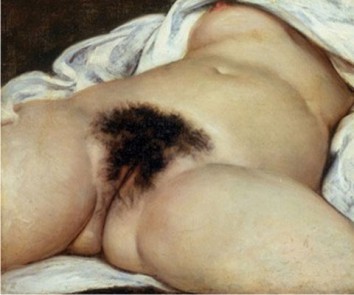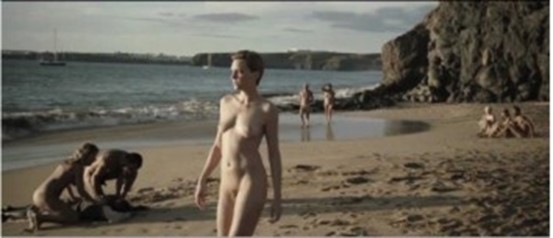Cinemas’ Revelations of Reality: Immigration and Segregation in the Travelling of L’envahisseur
byCinema allows us to give words and images to catastrophic events. This form of storytelling offers the possibility of operating within a socially traumatic reality resulting in metaphorical symbols Both psychoanalysis and art undertake, in different ways, the arduous task of illuminating invisible moral and societal prejudices. Cinema is an influential art form which utilizes images, and words to challenge our cultural beliefs and values. This cultural exchange allows the audience to understand what would otherwise be concealed, silenced or rejected.
Catastrophic events, whether socio-natural disasters or economic-political crises, result in systemic trauma and continue to generate new forms of exclusion. Cinema, when not promoting fetishism and voyeurism, allows us to give words and images to symbolize the now distorted reality. The power of cinema may offer the possibility of civil discourse, education, and a platform for legal and humanitarian remedies. An eloquent and provocative example of this potentiality is the Belgian film L’envahisseur which portrays illegal immigration and segregation.
The beginning of The Invade, by Nicolas Provost, utilizes a long tracking shot that begins with the enigmatic close-up of a female. This cinematography echoes the famous and scandalous painting The Origin of the World, painted in 1866 by the French artist Gustave Courbet. The oil on canvas painting shows the pubis, open legs and abdomen of a naked woman lying on a white sheet. Never before had the female sex been represented in such a realistic way in pictorial art by male artists Never was such a vivid and shocking image the central focus of a painting.

Provost ’s camera starts from the naked image of a woman and from there he gradually offer us information about the scene. The body is revealed to be a young woman who is sunbathing on a beach. We see her sit up and look at a point in the distance. The young woman, with an alabaster and imposing body, stands up and begins to walk. As she moves, we notice that there are other people who are also naked. The audience understands they are experiencing a nudist beach, one of many on the coasts of Europe. We next see the woman’s attentive and surprised gaze, directed towards a point outside the scene. Behind her, several bathers run desperately towards the sea. Something disturbing has happened. Several inert bodies in the sand are seen in the shot as people try to resuscitate them.
As the young woman continues her walk, the camera turns towards the scene that captured her attention. We then see two men of African origin, exhausted, almost naked, who struggle out of the water. Suddenly, we realize the meaning of the sequence: we are witnessing the shipwreck of a group of immigrants who escaped from their country to clandestinely enter the coasts of Europe. A situation that is no less terrible because it is ongoing, based on their poverty and desperation. They will risk their lives through the use of these precarious dinghies hoping to establish a better future in a more benevolent society.
The composition of the foreground undergoes an abrupt change of framing. Provost contrasts the beauty and eroticism of the beach, with the death of a group of shipwrecked immigrants. The horror behind the beauty is revealed. The imposing beauty of the model Hannelore Knuts splits the screen between death and life.

Provost presents the contrast between the frivolous nudist beach and the ominous shipwreck of the African migrants. Nudist colonies represent an individual’s rebellion against the normative virtues of a society. Their nakedness represents a form of power, and perhaps, even egoism. In contrast, the immigrants’ moral reality is based on political subjugation, and their nudity reflects suffering, helplessness, humiliation and vulnerability. Provost also portrays the symbolic difference in color between the white body of the European woman and the black bodies of immigrants. Is the representation of her body considered to be virtuous or sexualized? Or do both sets of images represent separate categories of oppression?
Provost’s most skillful commentary is his ambiguity of the exchange of glances between her and the survivors. The woman looks at them with haughty surprise. For her, they are the embodiment of the Other, something strange and foreign that invades her comfort space. There is no look of pity or compassion from her, it is their repugnant and unwelcome presence in her environment which is the source of her disdain. Her repudiation is not their nakedness, but their immigration status. In contrast, the African’s non-predatory gaze towards her, forms a mixture of sadness and despair, as well as stupor and fascination at the woman’s beauty, They separately experience shame at how they are seen and instantly judged by her.
The splendor of the woman’s physique embodies for an immigrant to Europe, the first world paradise, the illusion of a better life, and the object of desire that, if acquired, would guarantee happiness. However, when the same discourse is perceived from the European point of view, these vulnerable individuals are categorized as invaders, foreigners, or at best, exploitable labor. Instead of offering sustenance to ameliorate their misery, their survival and torment and nakedness are categorized as a physical threat whose arrival is not welcome.

Provost ’s tracking shots show the power of cinema to reveal in a single sequence the tragedy of the downtrodden and the disturbing specter of Europe as a tolerant land of promise. The visual image from Courbet ’s The Origin of the World constitutes an ironic commentary on the ethnocentric belief Europeans are the original and sustaining source of cultural values, aesthetics, knowledge, and moral norms. This premise provides an existential scaffolding of superiority compared to the rest of the planet. This illusion justifies the subjugation of other cultures, imperialism and colonization and permits continued segregation and exploitation of what is not “European.”
In summary, danger hides under the veil of classical beauty embodied by Courbet’s painting and within the body of Hannelore Knuts. Although Knuts presents herself in the image of a Greek goddess to these refugees, we do not know if this goddess will welcome them into her womb... or pulverize them with lightning. Through cinema, Provost reveals how “naked” power continues to dehumanizes society.
NOTE
FORUM
Film:The Invader
Original Title:L'envahisseur
Director: Nicolas Provost
Year: 2011
Country: Belgium
Other comments by the author:
• Two Strangers who Meet Five Times